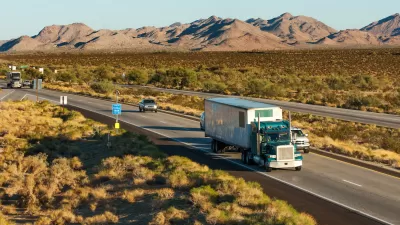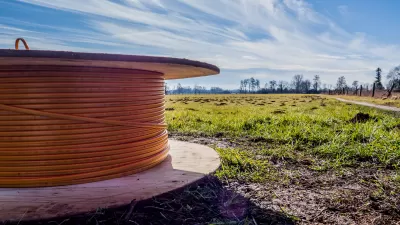Nate Berg reports on the efforts of one Bay Area business owner to get his city to upgrade its internet infrastructure by investing his own money.
Business owners and public officials in the California community of San Leandro have Patrick Kennedy, CEO of the software company OSIsoft, to thank for upgrading 11 miles of the city's copper wires to higher-speed fiber optic cables. Seeing the opportunity to piggyback on a city project to lay down conduits to link up its traffic lights, and a lack of public money to take on the fiber optic initiative, Kennedy will spend between $3-5 million out of his own pocket to finance the upgrade.
According to Berg, "[t]he cables will increase the speed of internet from about 1.5 megabits per second to 10 gigabits per second, or about 666 times faster than before. The prospect is tantalizing for companies that deal with large amounts of data, including medical services, design firms, imaging services, and data centers."
As Kennedy could not have afforded to fund the entire project on his own, including the costs to dig up city streets, those involved in the project see it as a potential model for public-private partnerships across the country.
"This project 'could not have been done as a private or public project. It's only the public-private partnership that made this happen,' Kennedy says. He encourages other cities that are thinking about making similar investments to tap into local business interests who may be able to share in the costs of what would also be a shared benefit for a wide array of businesses."
FULL STORY: How One Man Built His City a Fiber Optic Network

Maui's Vacation Rental Debate Turns Ugly
Verbal attacks, misinformation campaigns and fistfights plague a high-stakes debate to convert thousands of vacation rentals into long-term housing.

Planetizen Federal Action Tracker
A weekly monitor of how Trump’s orders and actions are impacting planners and planning in America.

In Urban Planning, AI Prompting Could be the New Design Thinking
Creativity has long been key to great urban design. What if we see AI as our new creative partner?

King County Supportive Housing Program Offers Hope for Unhoused Residents
The county is taking a ‘Housing First’ approach that prioritizes getting people into housing, then offering wraparound supportive services.

Researchers Use AI to Get Clearer Picture of US Housing
Analysts are using artificial intelligence to supercharge their research by allowing them to comb through data faster. Though these AI tools can be error prone, they save time and housing researchers are optimistic about the future.

Making Shared Micromobility More Inclusive
Cities and shared mobility system operators can do more to include people with disabilities in planning and operations, per a new report.
Urban Design for Planners 1: Software Tools
This six-course series explores essential urban design concepts using open source software and equips planners with the tools they need to participate fully in the urban design process.
Planning for Universal Design
Learn the tools for implementing Universal Design in planning regulations.
planning NEXT
Appalachian Highlands Housing Partners
Mpact (founded as Rail~Volution)
City of Camden Redevelopment Agency
City of Astoria
City of Portland
City of Laramie





























